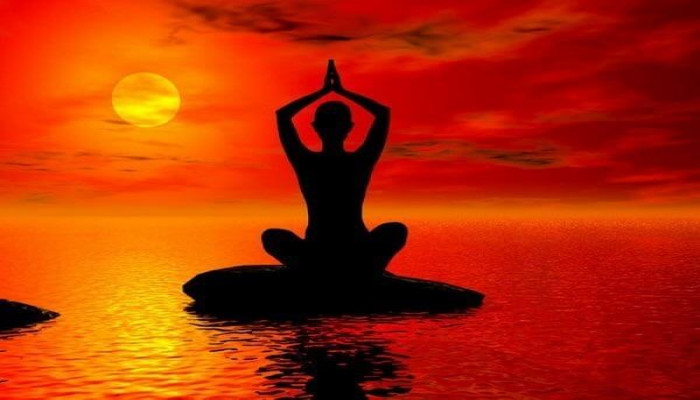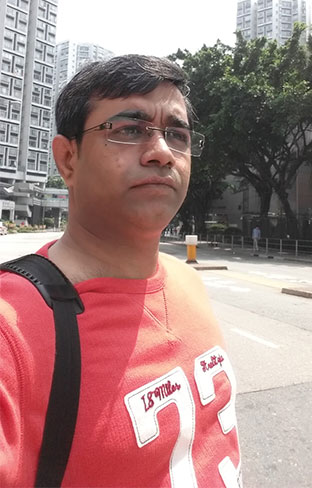Hindu Philosophical Traditions - The Pinnacle of Human Thoughts
- In History & Culture
- 06:19 PM, Oct 24, 2021
- Sagar Kinhekar
That Hindu or Sanatana Dharma has helped develop multiple disciplines of science is very apparent. The great Vedic tradition had great mathematicians like Aryabhatta who first calculated the number of days in a year, Brahmagupta who first gave sine table and pythagorean triangle or Bhaskar who invented calculus. At the same time Hindu thought included Ayurveda, an ancient tradition of medicine that included psychiatry as one of the disciplines when world over medicine was at the infancy at its best. With a developed architecture as can be seen from grand ancient temples that stand proudly across India even after thousands of years, no one can doubt the scientific temper of ancient Hindus. Astronomical calculations in Surya Siddhanta or Ecological contributions of Varahmihira or Nagarjuna’s contributions in Chemistry stand tall even when compared to modern disciplines of these studies. However, one discipline that stands out as a crown jewel of Hindu scientific tradition, it is philosophy.
The origin of some of the philosophical traditions are traced back to Vedas and some developed independently. However, even those that are not traced back to Vedas do accept the authority of Vedas. The philosophical traditions in India, including those in larger Hindu fold like Buddhist and Jain, focused on development of individual and attainment of ultimate bliss. This ultimate bliss was called by different names like Moksha or Niravana. Some philosophies were atheist and others accepted a God as ultimate reality, however all of them regarded Karma (actions of individual) as creator of destiny of individuals. All the traditions revolved around the question of “who am I” the reason and purpose of human life.
The Hindu philosophy is most commonly divided into six different categories, Nyay, Vaisheshika, Sankhya, Yoga, Purva Mimansa and Uttar Mimansa (or Vedant).
Nyaya literally means ‘Logic’. This tradition seeks to define the question of human existence and existence of God through Logic. This tradition had developed a rich framework of epistemology, ontology, doubt, purpose and reductio ad absurdum (In Sanskrit, Pramana, Prameya, Samasya, Prayojana and Tarka). Debate was an important part of this tradition. There are many types or debates that are defined by text called Nyaya-Sutra that included discussion to establish truth (vada), debate aimed at defeating opponent and not establishing truth (jalpa), debate to refute opponent’s view with no interest in positive outcome (vitanda) and fallacious arguments (hevabhasha) etc.
Vaisheshika, stresses the establishment of ethics and morality as the basis of Dharma. The Vaisheshika Sutra, written by Kanada establishes that through ethics and morality human being can attain moksha. The most important philosopher of this tradition (and writer of Vaisheshika Sutra), Kanad, was also physicist. His stress of ethics and morality over metaphysical god or spirit is often misunderstood as rejection of God. However, he could be called agnostic if anything.
Sankhya, is probably most followed philosophy along with Vendanta. Sankhya and Yoga are generally talked about together. The reason being, both philosophies talk about Purush and Prakriti (consciousness and nature) as two entities that constitute this world. In Sankhya once Purusha knows its true nature the bonds of Karma are broken and Purusha can at once achieve liberation or Moksha. However, in Yoga the bond of Karma is broken by following a regimented eight-part process. This eight-part process is called eight limbs (ashtanga) of the Yoga system.
The first four parts concern with physical body and the rest deal with meditation and state of being in complete detachment from the world (samadhi). As per this system, Moksha is attained when individual attains the samadhi.
Purva Mimansa, or Karma Kanda of Veda, concerns with actions, ethics and duties. It stresses on the duties of individual in context to the roles one plays during her own life time. As a mother or a father, as son or a daughter, as a soldier or a worker, every role has its own duties and ethics. By following these duties through proper actions and ethics an individual can hope to attain moksha. This system then evolved further and the mental state while performing these duties was thought to be of paramount importance.
When the thinkers started going into the metaphysics of actions, they evolved a philosophy that not only dealt with action themselves but also a psychological system to help attain moksha. This was called Vedanta (literally means end result of Vedas). Texts called Upanishads were written by multitudes of thinkers that gave path to moksha in Vedantic system.
Many subsequent thinkers interpreted Upanishads to evolve Vedantic school that gave birth to sub systems like Adwaita, Dwaita or vishistadwaita. While all schools of Vedanta accept presence of an Atma or Soul, the debate revolves around whether Atma is a separate independent entity from God or they are one. This is a detailed subject in itself for discussion in some other time. But it will be worth noting here that some Vedantic schools such as Advaitic schools regard Atma same as Brahman (name used for God). While some like Dvaita schools, accept a separate existence of a supreme God. In this day if one wants to see the difference they can well read or hear Ramakrishna Mission for Advaita and ISKCON for Dvaita.
Other than these six there are some thoughts like Carvaca, who were complete atheist traditions and based on physical experience alone. They did not go into much metaphysics apparently. Sadly, much of their text is lost to us.
In summary, whether you like logic or you are an action-oriented person, whether you believe a supreme God or are a polytheist, whether you are atheist or agnostic, there is something for everyone in Hinduism.
Image source: ClearIAS
Disclaimer: The opinions expressed within this article are the personal opinions of the author. MyIndMakers is not responsible for the accuracy, completeness, suitability, or validity of any information on this article. All information is provided on an as-is basis. The information, facts or opinions appearing in the article do not reflect the views of MyindMakers and it does not assume any responsibility or liability for the same.







Comments